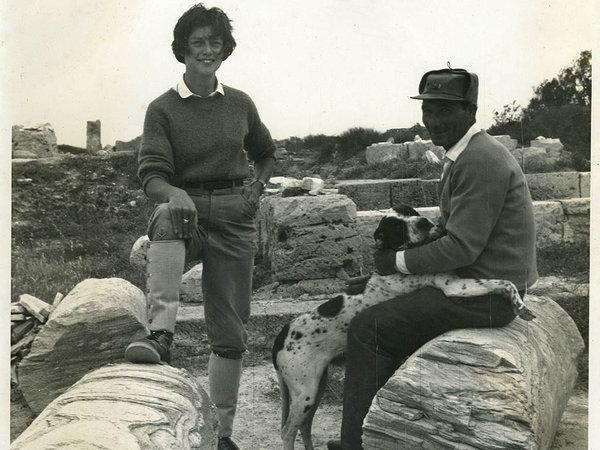
Theresa Howard Carter, 85, of West Chester, a distinguished archaeologist and scholar of the ancient Near East, died Sunday, April 19, at home of causes related to aging.
Dr. Carter was one of a dwindling generation of pioneering women archaeologists who excavated their way across the Middle East, the Mediterranean, and North Africa. She worked during a time of discovery at some of the great dig sites of the 20th century.
Her flash camera produced the first images from amid the gloom at the Midas Tomb at Gordion in Turkey during the summer of 1957. There, she worked with a team led by director Rodney Young from the University of Pennsylvania, along with Machteld Mellink, Emily Vermeule, and Ellen Kohler.
Dr. Carter’s field experience was wide-ranging, and took her to Sybaris in Calabria, Italy; Lepcis Magna in Libya; Elmali in Turkey; the Euphrates Valley in Syria; Tell al-Rimah in Iraq; and Failaka in Kuwait.
She was associated with the University of Pennsylvania Museum, first joining the staff in 1950 and later serving as an excavation team member on projects initiated by director Froelich Rainey.
“Dr. Carter was a superb field archaeologist,” said Joan Breton Connelly, professor of classics and art history at New York University and a member of Dr. Carter’s team in Kuwait during the 1980s. “She knew how to build an effective team and inspire it, was enormously fun and superb company, and was blessed with an old-school elegance and sharp wit.”
In 1965, Dr. Carter was appointed annual professor of the American School of Oriental Research in Baghdad. She joined the Johns Hopkins University Department of Near Eastern Studies in 1970. From 1980 to 1987, Dr. Carter served as chief adviser to the Kuwait National Museum and director of the Kuwait Archaeological Survey.
In her article “Dilmun: At Sea or Not at Sea” (Journal of Cuneiform Studies, 1987), Dr. Carter theorized that the ancient civilization of Dilmun, one of the oldest in the Middle East, might be found at a tell between Qurnah and Basra in southern Iraq. A tell is multiple layers of detritus that form a mound at a former site of human occupation.
Born in Millbrook, N.Y., the daughter of Clarence K. and Anne Warren Howard, she was reared on a dairy farm with an extended family, plus cats, rabbits, and a Shetland pony.
Her early love of animals and the environment later blossomed into volunteer work for the Philadelphia Zoo, Wildlife Preservation Trust International, Brandywine Conservancy, and Bartram’s Gardens.
Until age 13, she was educated at Miss Howard’s School, which was run in her home by an aunt. She graduated from Millbrook Memorial School and earned a bachelor’s degree in anthropology from Syracuse University. Dr. Carter completed a master’s degree in anthropology at the University of Pennsylvania in 1954 and in 1962 earned a doctorate in Near Eastern archaeology, classical archaeology and ancient history at Bryn Mawr College. Mellink, her dissertation supervisor, became her lifelong friend.
In 1990, Dr. Carter was awarded the Arents Pioneer Medal, the highest alumni award granted by Syracuse for professional achievement. A fellow of the Royal Geographical Society, London, she was awarded the Distinguished Service Award from Kuwait University in 1974.
She was a lady of great style, a brilliant hostess, accomplished cook, thoughtful gardener, keen traveler, generous mentor, treasured friend, and true Bryn Mawr archaeologist, said her friend Joan Connelly.
Dr. Carter was married to Edward C. Carter II. The two divorced. He died in 2002. The couple’s daughter, Laura Coffin Carter, died in 1982.
Surviving are three cousins.
Graveside services are to be held at 11:30 a.m. Friday, May 1, at St. David’s Episcopal Church Cemetery, 763 S. Valley Forge Rd., Wayne.
